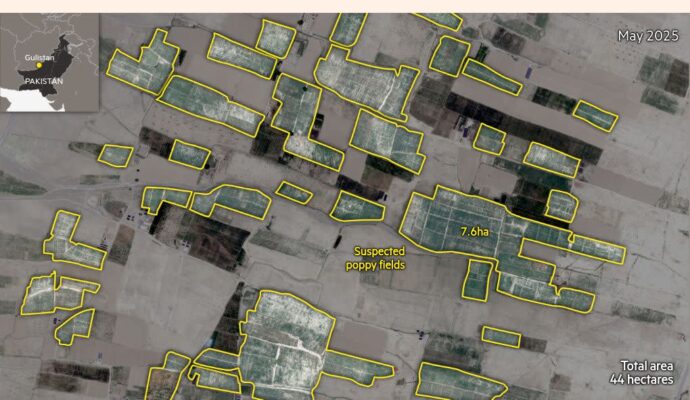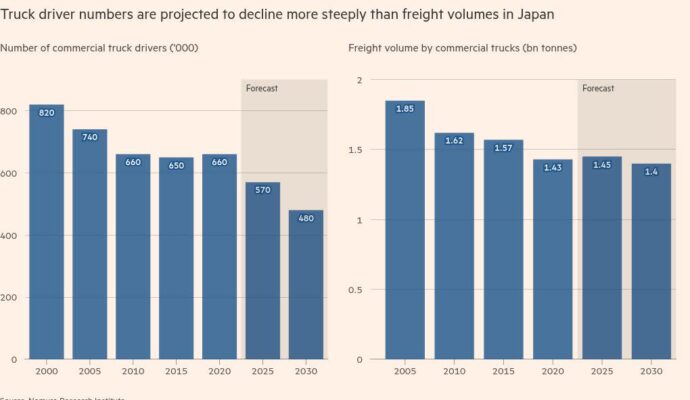Unlock the Editor’s Digest for free
Roula Khalaf, Editor of the FT, selects her favourite stories in this weekly newsletter.
Japan’s Liberal Democratic party, the political bloc that has governed the country almost exclusively for 70 years, has lost its majority in both houses of parliament for the first time.
The LDP and its coalition partner, Komeito, emerged from Sunday’s pivotal election to the 248-seat upper house at least two seats short of the figure needed to retain a majority.
The result of the election, which was fought against a background of rising living costs, higher levels of immigration and wages that have failed to keep up with inflation, deals a heavy blow to Prime Minister Shigeru Ishiba.
The most striking gains of the night were made by the Democratic Party for the People, which increased its share from nine seats to 22. The overtly anti-foreigner Sanseito party, having previously held just two seats, emerged with a 15–seat position in the upper house.
The LDP’s losses and the rise of smaller populist parties put Ishiba and his party in a severely weakened position as they try to negotiate a trade deal with the US. There have already been calls within the LDP for Ishiba’s resignation.
Ishiba indicated on Sunday night that he planned to remain as leader and the bloc will continue to govern via coalition and partnerships in the lower house. The prime minister is expected to speak later on Monday.
Despite the severity of the setback, the LDP performed somewhat better than the initial exit polls suggested, and remains the single largest party in parliament. “It’s a tough situation. I take it humbly and sincerely,” Ishiba said in a TV interview on Sunday.
Ishiba, who has built a political career on his broad appeal to ordinary working Japanese, acknowledged that his party’s efforts to alleviate rising prices had not reached enough people. Over the past year, rice prices have roughly doubled.
Both political and financial analysts predict instability in the coming weeks and months as the incumbent parties and the populist opposition parties map out their positions in the new parliamentary landscape.
Markets were shut in Tokyo on Monday but bond and currency markets are expected to be volatile as emboldened leaders of the Democratic party for the People and Sanseito, whose call for tax cuts attracted support from large numbers of young working Japanese, press their advantage in a situation that has forced the LDP on to the back foot. The yen weakened 0.3 per cent against the dollar to ¥148.4 in early trade.
As well as fighting for his survival as prime minister, Ishiba must also navigate negotiations with the US before Washington imposes 25 per cent tariffs on Japanese imports on August 1. Ryosei Akazawa, his chief negotiator, is due to travel to Washington this week for more talks.
The LDP lost its majority in the lower house when Ishiba called a snap general election in October. The LDP has not been in a minority position in both houses simultaneously since its foundation in 1955.
Naohiko Baba, Japan economist at Barclays, said in a note on Monday that historical precedent suggested Ishiba would be held strictly accountable within the LDP.
Ryutaro Hashimoto resigned as prime minister in 1998 following a crushing defeat in the upper house election and, in 2007, Shinzo Abe lost a majority in the same chamber and resigned one month later.


